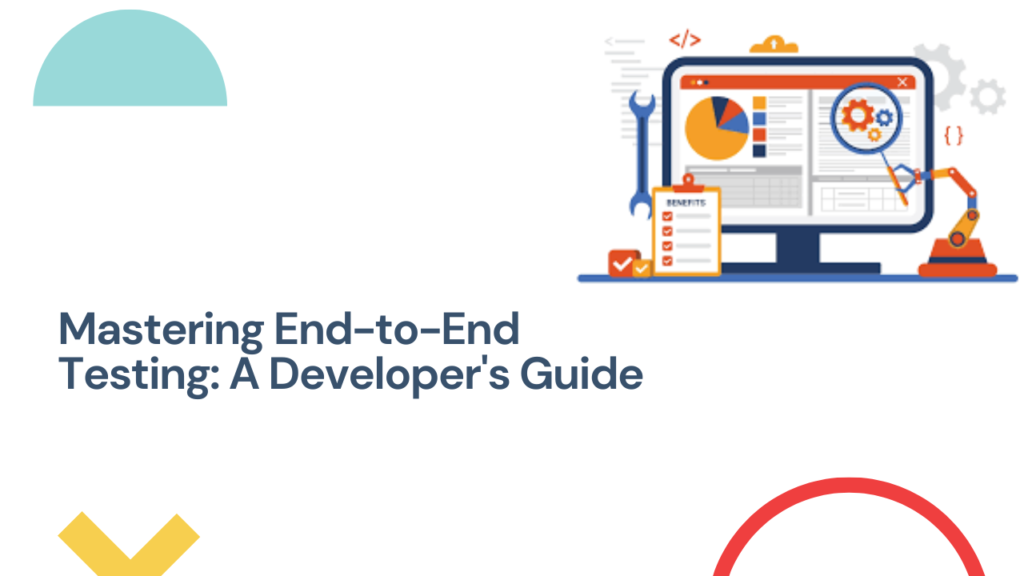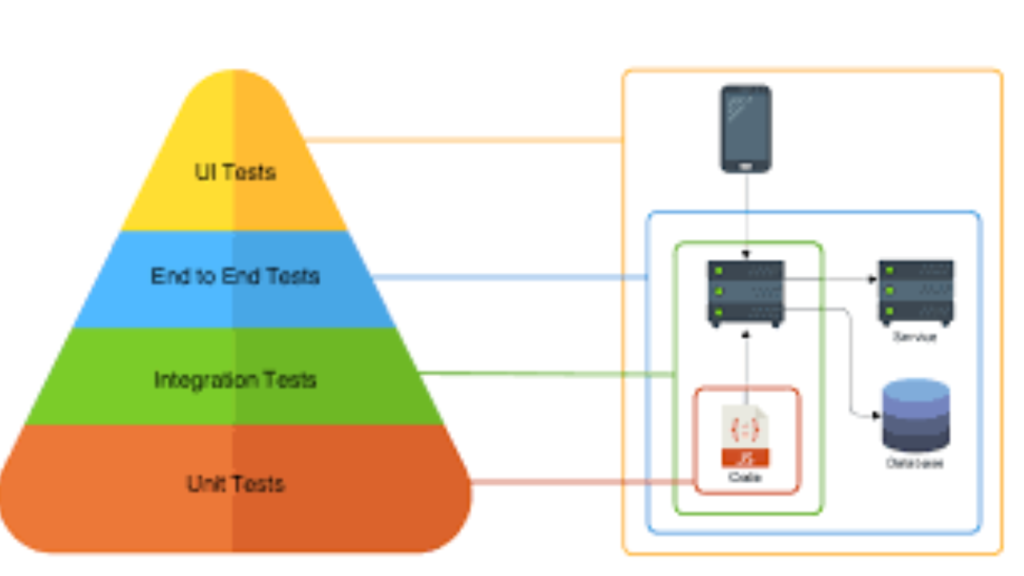Understanding the Essence of End-to-End Testing in Software Development

In the dynamic world of software development, delivering high-quality software with innovative features is paramount. However, ensuring such quality and uniqueness requires rigorous testing under various conditions. Among the plethora of testing techniques available, one stands out as indispensable: End-to-End Testing (E2E).
What is End-to-End Testing?
End-to-End Testing is a crucial technique employed to assess an application’s performance from initiation to conclusion, encompassing all its dependencies. It involves simulating real user scenarios to evaluate the application’s behavior from the user’s perspective. The primary aim is to ascertain whether the application functions as intended and maintains integrity across its various components. Failure in any of these sub-components could lead to system crashes, posing significant risks in software development, which E2E testing effectively mitigates.
The End-to-End Testing Process: End-to-End Testing can be executed in two main ways: vertically and horizontally. Horizontal testing, the more common approach, is frequently employed. Conversely, vertical testing is utilized when evaluating critical components of complex computing systems that aren’t user-facing. Although both methods serve the same purpose, each has distinct prerequisites and advantages.

Horizontal End-to-End Testing:
Horizontal End-to-End Testing is an essential approach conducted from the end-user’s perspective. Its primary focus is to assess the user’s ability to navigate through the software seamlessly and utilize its functions as intended. This testing methodology aims to identify any bugs, glitches, or exceptions that may hinder the user’s interaction with different aspects of the software.
Prerequisite: To execute Horizontal End-to-End Testing effectively, it is imperative to have the test environments for the system set up in advance. This ensures a smooth testing process and accurate evaluation of user experience.
Example: Consider an e-commerce web application. Horizontal E2E testing would involve scenarios such as testing whether users can successfully sign up or log in to their profiles, search for items, add items to their cart, securely enter their payment information, confirm their purchase, and sign out. By simulating these user journeys, testers can ensure the software functions flawlessly from the user’s perspective.
Vertical End-to-End Testing:
Vertical End-to-End Testing operates on a layered or hierarchical approach, wherein tests are conducted across different layers or levels of the software architecture. This comprehensive testing strategy involves testing each subcomponent of the system from initiation to completion to ensure overall system quality.
Prerequisite: Successful implementation of Vertical End-to-End Testing necessitates the support of a well-defined testing or development strategy. This ensures that testing efforts are coordinated and aligned with the system’s architecture and requirements.
Example: Vertical E2E testing can be particularly beneficial when testing an application program interface (API). By systematically testing each layer of the API, including the data layer, business layer, integration layer, and presentation layer, testers can verify the functionality, performance, and reliability of the API across various scenarios.
In summary, both Horizontal and Vertical End-to-End Testing play critical roles in ensuring the quality, reliability, and functionality of software systems. By adopting these testing methodologies, organizations can mitigate risks, enhance user experience, and deliver robust software solutions to their customers.
Performing End-to-End Testing:
End-to-End (E2E) testing is a crucial phase in the software development lifecycle, ensuring that the application functions seamlessly from start to finish. Here’s a detailed guide on how to perform E2E testing effectively:
Step 1: Requirements Analysis: Begin by thoroughly analyzing all the requirements of the application. Gain a clear understanding of its functionalities and how it should operate in every aspect.
Step 2: Test Environment Setup: Set up a test environment that mirrors the production environment, ensuring that it aligns with the specified requirements.
Step 3: Software and Hardware Analysis: Evaluate the software and hardware requirements needed for testing to ensure compatibility and optimal performance.
Step 4: Define System Responses: List out how the system is expected to respond under different scenarios and user interactions.
Step 5: Identify Testing Methods: Determine the appropriate testing methods required to validate the system’s responses effectively.
Step 6: Test Case Design: Design comprehensive test cases that cover all possible scenarios and user interactions, ensuring thorough test coverage.
Step 7: Execution and Result Analysis: Execute the test cases and meticulously document the results, identifying any deviations from expected behavior and areas for improvement.
End-to-End Testing Frameworks:
Several frameworks facilitate the seamless execution of E2E testing, ensuring the accuracy and efficiency of the testing process. Here are some popular E2E testing frameworks:
- Selenium: Selenium is a widely-used E2E testing framework known for its versatility and robust features. It supports multiple programming languages and enables testers to simulate various user actions effectively. With features like parallel execution and seamless integration with other frameworks, Selenium streamlines the testing process for enhanced efficiency.
- Testim: Testim is a user-friendly yet powerful E2E testing framework that leverages advanced algorithms and artificial intelligence (AI) to execute tests efficiently. Its intuitive user interface simplifies test creation and execution, making it ideal for testing complex dynamic applications. Testim also offers parallel execution capabilities and seamless integration with other testing frameworks.
- Cucumber: Cucumber is a behavior-driven development (BDD) framework that emphasizes collaboration between stakeholders and testers. Using Gherkin, a language that resembles plain English, Cucumber allows non-technical users to write and understand test scripts easily. This makes it an excellent choice for teams focusing on clear communication and collaboration throughout the testing process.
- Cypress: Cypress is a modern E2E testing framework designed for applications built on frameworks like Angular and React. Its tests are written in JavaScript, simplifying debugging and test execution. Cypress provides real-time feedback, allowing testers to observe changes immediately, facilitating rapid application development.
By leveraging these E2E testing frameworks, teams can ensure the accuracy, reliability, and performance of their applications, ultimately delivering high-quality software solutions to end-users.
Benefits of End-to-End Testing:
- Risk Reduction: End-to-End testing involves testing the application thoroughly after each iteration or sprint, significantly reducing the likelihood of future risks. By identifying and addressing potential issues early in the development cycle, teams can mitigate risks and ensure smoother project delivery.
- Enhanced Confidence: Through rigorous testing at every layer of the application, End-to-End testing instills confidence in the functionality and performance of the software. Since testing is conducted from the user’s perspective, stakeholders gain assurance that the application meets user expectations, increasing confidence in its release to the public.
- Cost and Time Savings: Thorough testing across the entire application eliminates the need for repetitive testing, leading to cost and time savings. By streamlining the testing process and avoiding redundant tests, organizations can allocate resources more efficiently, driving productivity in other areas of development.
What’s The Next Step?
For any commercial software release, End-to-End testing is indispensable. It mirrors real-world user behavior, safeguarding organizations from releasing faulty software to the public. If you’re eager to delve deeper into E2E testing and other testing techniques, consider enrolling in the IgnisysIT Automation Testing Course. Designed to advance your career as an automation test engineer, this course covers essential skills demanded by the industry, including GIT, Selenium, Jenkins, and JMeter. Take the next step today to empower yourself with the knowledge and skills needed to develop high-quality products and propel your career in testing.

Leave a Reply